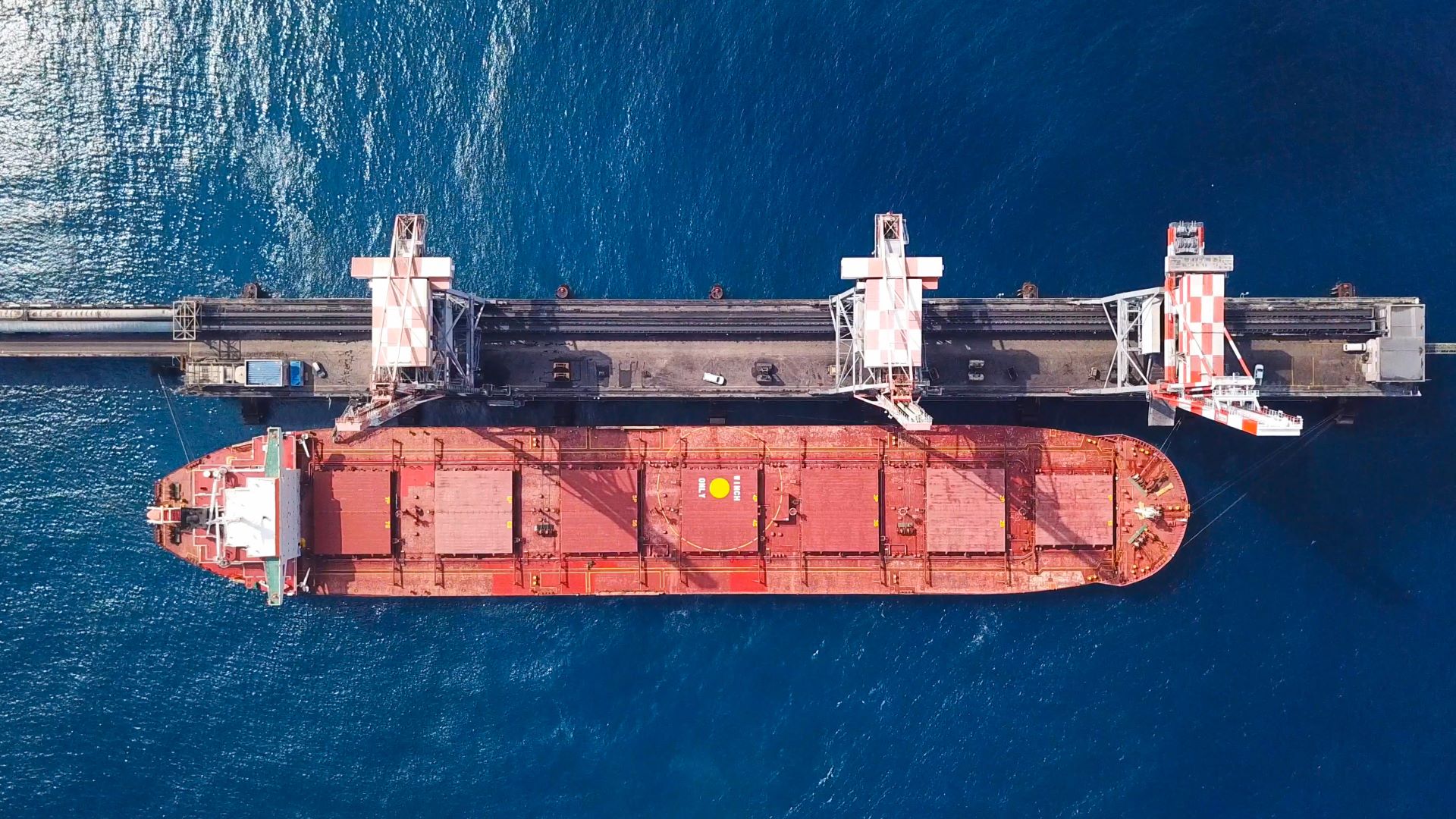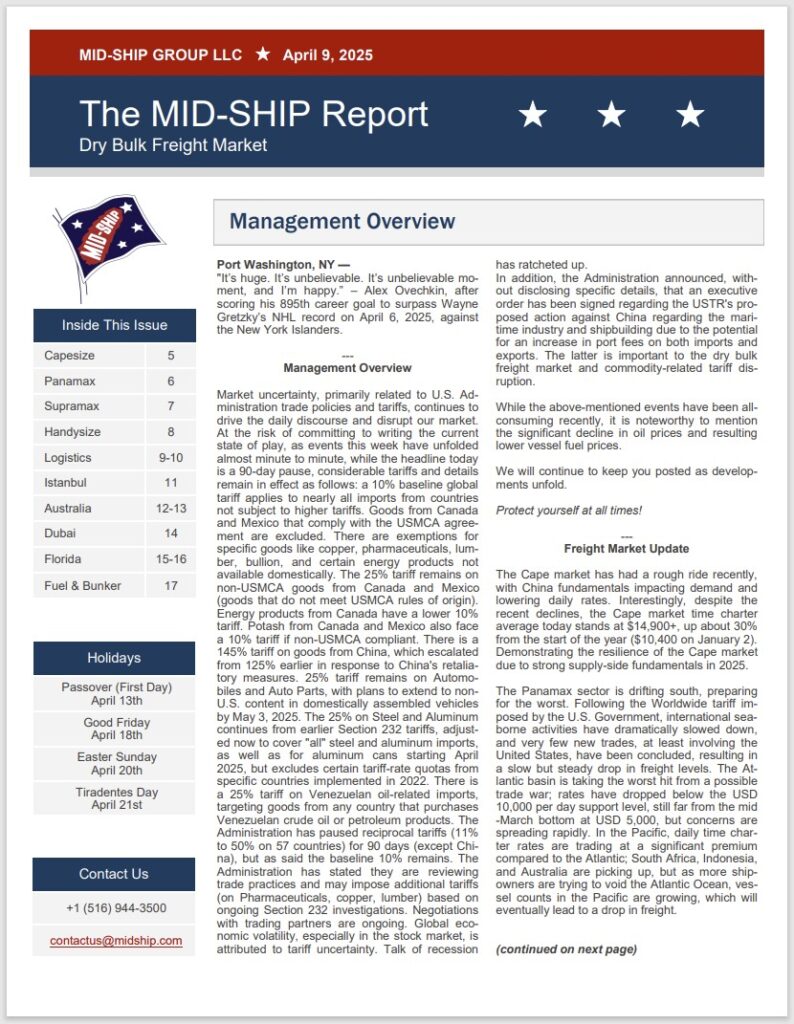MID-SHIP Report: Dry Bulk Freight Market – April 9, 2025

April 9, 2025
The Cape market has had a rough ride recently, with China fundamentals impacting demand and lowering daily rates. Interestingly, despite the recent declines, the Cape market time charter average today stands at $14,900+, up about 30% from the start of the year ($10,400 on January 2). Demonstrating the resilience of the Cape market due to strong supply-side fundamentals in 2025.
The Panamax sector is drifting south, preparing for the worst. Following the Worldwide tariff imposed by the U.S. Government, international seaborne activities have dramatically slowed down, and very few new trades, at least involving the United States, have been concluded, resulting in a slow but steady drop in freight levels. The Atlantic basin is taking the worst hit from a possible trade war; rates have dropped below the USD 10,000 per day support level, still far from the mid-March bottom at USD 5,000, but concerns are spreading rapidly. In the Pacific, daily time charter rates are trading at a significant premium compared to the Atlantic; South Africa, Indonesia, and Australia are picking up, but as more shipowners are trying to void the Atlantic Ocean, vessel counts in the Pacific are growing, which will eventually lead to a drop in freight.
The North Atlantic Supramax market remains highly positional, with significant downward pressure on rates. Vessel owners, traders, and charterers are grappling with the impacts of the USTR (U.S. Trade Representative) fees on Chinese vessels calling U.S. ports and the ongoing volatility of the Trump Tariff War of 2025. These geopolitical challenges create uncertainty in the market and a lack of clear direction for future trade. In the Pacific, the steel market ex-North Asia continues to yield premiums for shipments to the Continent, Mediterranean, and Persian Gulf regions.
The Handy market has not been able to gain any momentum as the shipping world awaits the details of the executive order signed by President Trump this week. Activity is minimal from the U.S. Atlantic and U.S. Gulf; rates have started to soften since the last fixed. The Baltic index is also not helping the negative sentiment, as the rates are dropping quicker than what is being done in the physical spot market. The U.S. Gulf to Europe Trans-Atlantic trip has been marked as below USD 11,000 per day, according to the index. However, owners will larger Handy have managed to fix this route in the USD 13,000 per day earlier in the week.
Subscribe below to receive the full report.
